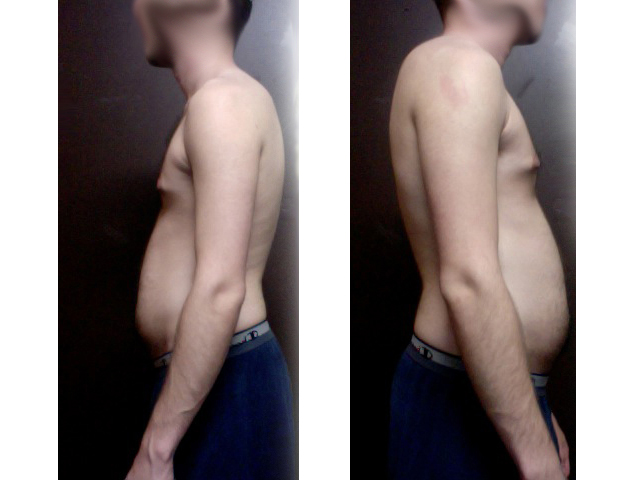What Is The Difference Between Dynamic vs. Static Stretching
Introduction
Stretching before exercise is an important component of any fitness routine. It helps to prepare the body for physical activity, improve flexibility, and reduce the risk of injury. There are two main types of stretching: dynamic stretching and static stretching. While both types have their benefits, they differ in terms of how they are performed and the effects they have on the body. Doing the wrong type of stretch can lead to injury.
Learn the simple difference between dynamic and static stretching.

Introduction to Dynamic and Static Stretching
Dynamic stretching involves moving parts of your body through a full range of motion to warm up the muscles and increase blood flow. It is typically done before a workout or physical activity to prepare the body for movement.
Static stretching, on the other hand, involves holding a stretch for a prolonged period of time without movement. It is often done after a workout to help improve flexibility and cool down the muscles.
The Benefits of Stretching Before Exercise
Stretching before exercise offers several benefits. First and foremost, it helps to improve flexibility and range of motion. By stretching the muscles and tendons, you can increase their elasticity and ability to move freely. This can be especially beneficial for activities that require a wide range of motion, such as dancing or martial arts.
In addition to improving flexibility, stretching before exercise can also help to reduce the risk of injury. When muscles are tight and inflexible, they are more prone to strains, sprains, and other injuries. By stretching before physical activity, you can help to loosen up the muscles and reduce the likelihood of injury.
Furthermore, stretching before exercise can enhance performance during your workout. When muscles are properly warmed up and stretched, they are able to contract and relax more efficiently. This can lead to improved strength, power, and endurance during physical activity.
What Is Dynamic Stretching?
Dynamic stretching involves moving parts of your body through a full range of motion to warm up the muscles and increase blood flow. It is typically done before a workout or physical activity to prepare the body for movement. Dynamic stretching exercises can include movements such as arm circles, leg swings, and walking lunges.
Dynamic stretching is different from static stretching in that it involves continuous movement rather than holding a stretch. This type of stretching helps to increase blood flow to the muscles, which can improve their flexibility and performance. It also helps to activate the muscles and prepare them for the specific movements that will be performed during exercise.
How Does Dynamic Stretching Work?
Dynamic stretching works by increasing blood flow to the muscles and warming them up. When you perform dynamic stretches, you are actively moving your body through a full range of motion, which helps to increase circulation and deliver oxygen and nutrients to the muscles. This increased blood flow can help to improve muscle flexibility and performance.
Dynamic stretching also helps to improve neuromuscular coordination. By moving your body through different ranges of motion, you are training your muscles and nervous system to work together more efficiently. This can lead to improved balance, coordination, and overall movement quality during exercise.
What Is Static Stretching?
Static stretching involves holding a stretch for a prolonged period of time without movement. It is often done after a workout to help improve flexibility and cool down the muscles. Static stretching exercises can include movements such as hamstring stretches, calf stretches, and shoulder stretches.
Static stretching is different from dynamic stretching in that it involves holding a stretch rather than moving through a range of motion. This type of stretching helps to lengthen the muscles and improve their flexibility. It is typically done after exercise when the muscles are warm and more pliable.
How Does Static Stretching Work?
Static stretching works by lengthening the muscles and improving range of motion. When you hold a stretch for a prolonged period of time, you are allowing the muscles to relax and elongate. This can help to improve flexibility and reduce muscle tightness.
Static stretching can also help to reduce muscle soreness after exercise. When you perform intense physical activity, your muscles can become tight and develop small tears. By stretching after exercise, you can help to alleviate muscle soreness and promote faster recovery.
Which Type of Stretching Is Better for You?
The choice between dynamic vs. static stretching depends on the type of exercise being performed. Dynamic stretching is generally more appropriate before a workout or physical activity that involves dynamic movements, such as running or jumping. It helps to warm up the muscles and prepare them for the specific movements that will be performed.
On the other hand, static stretching is more appropriate after a workout or physical activity. It helps to cool down the muscles and improve flexibility. Static stretching can be especially beneficial for activities that require a lot of flexibility, such as yoga or gymnastics.
Incorporating a combination of both dynamic and static stretching into your fitness routine can be beneficial. Dynamic stretching before exercise helps to warm up the muscles and improve performance, while static stretching after exercise helps to cool down the muscles and improve flexibility.
Incorporating Stretching into Your Fitness Routine
Stretching before exercise is an important component of any fitness routine. It helps to improve flexibility, reduce the risk of injury, and enhance performance during physical activity. There are two main types of stretching: dynamic stretching and static stretching.
Dynamic stretching involves moving parts of your body through a full range of motion to warm up the muscles and increase blood flow. It helps to prepare the body for movement and improve neuromuscular coordination. Static stretching involves holding a stretch for a prolonged period of time to improve flexibility and cool down the muscles.
To incorporate stretching into your fitness routine, it is recommended to perform dynamic stretching before exercise and static stretching after exercise. This combination can help to prepare the body for physical activity, improve flexibility, and promote faster recovery. It is always a good idea to consult with a fitness professional for personalized stretching recommendations based on your specific needs and goals.
Knowing the difference between dynamic vs. static stretching is important. You must know when to do one type of stretching and not the other. However, to have a fully mobile and flexible body you should do both dynamic and static stretches.



